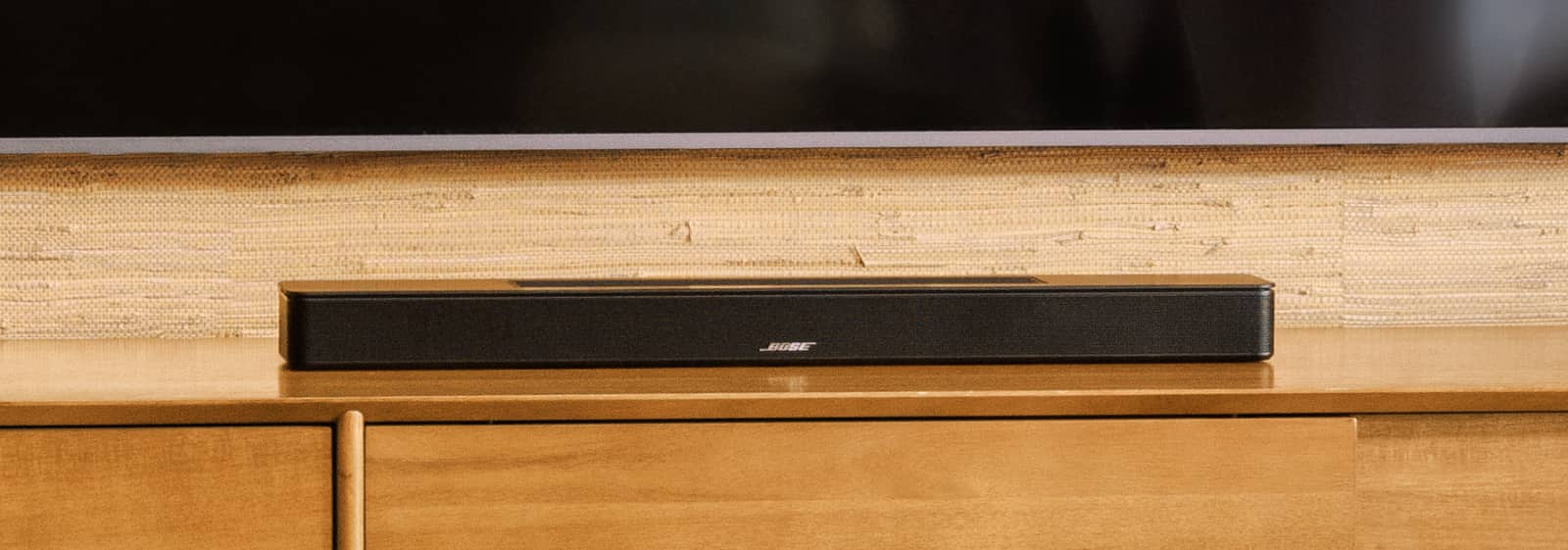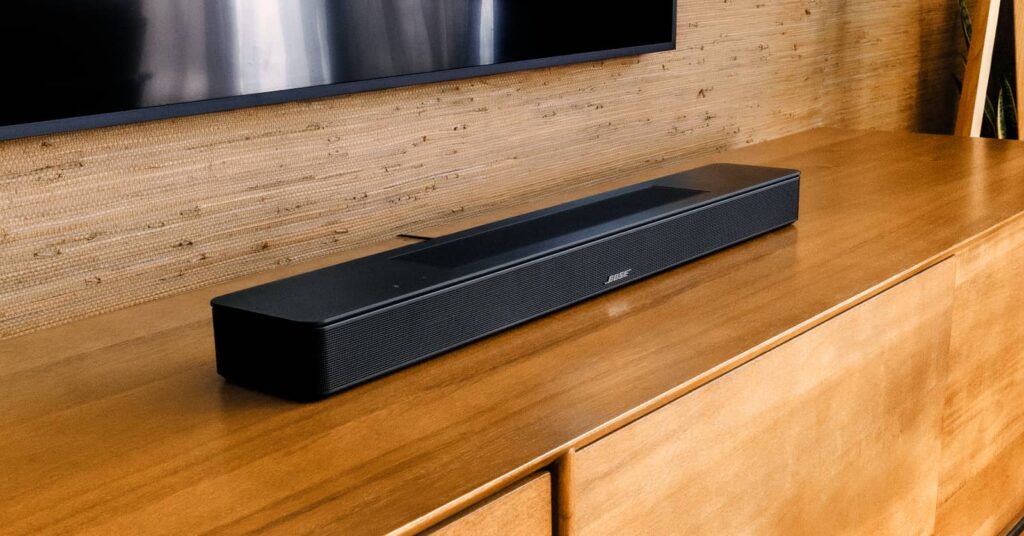Bose’s latest take on a 3D soundbar might just skip out on the psychoacoustic tech in exchange for upfiring speakers made small.
Improving the sound of your home theatre doesn’t always need the biggest spend, and you only need to look at the world of soundbars to see (and hear) what we’re talking about.
What once would have required a meaty amp and speaker system can be packed into a smaller size, making for one long bar you can sit in front of our TV to get awesome sound, improving the quality of what you hear as watch movies, TV shows, or just generally listening to your music with the screen off.
Soundbars vary wildly dependent on what you’re after, but it’s when you venture into the world of 3D sound do things get more complex. Known by many as Dolby Atmos (since it’s the most popular of the 3D sound technologies used in movies and music), 3D sound has two methods of delivering its bubble of sound to your living room: the slightly less expensive approach and the slightly more expensive.
The slightly less expensive approach uses sound timing to trick your brain into hearing three dimensional sound, with psychoacoustic sound basically convincing you that you’re hearing a 3D sound, even if it’s actually just a more spaced out stereo effect. It’s what you tend to hear on soundbars under the thousand dollar mark, used on the Sonos Beam and plenty of others.
Often priced over a grand, soundbars with upfiring speakers can make 3D sound more real, using speakers that fire sound up so they can bounce on your ceiling and create a level of sound based on height. You can find it on models such as the Sonos Arc and Sennheiser Ambeo, and these are often seen as the real approach to 3D sound in a soundbar, using your room’s ceiling to make the effect work. Meanwhile, psychoacoustic 3D sound is what soundbar makers use when there are no upfiring speakers.
The difference is there typically because of cost and design, because getting upfiring speakers into a small size isn’t always possible, and may not be cost effective. We’ve certainly not seen it in many truly compact soundbars.
Bose may well be changing that this year, with a new compact soundbar that surprisingly includes upfiring speakers, surprising us in the process.
The Smart Soundbar 600 is a little different from the typical compact soundbars appearing lately. Inside, it offers five speakers covering the front and sides, different from the Soundbar 900’s nine, but like that model, includes two upfiring speakers, projecting sound both out and up.
And it’ll come in a soundbar priced under $1000 in Australia, making it something of a surprise: a sub-$1K soundbar with actual upfiring Atmos speakers, and from a big brand, no less.
There’s more going on than just outward and upfiring speakers — though those are covered with two on each side at the corners, one centre at the front, and the two upfiring — with support for Bluetooth and Chromecast, assistant support over both Google Assistant and Amazon Alexa, and a way to extend the audio from the Bose soundbar to recent Bose headphones, making a night mode potentially easier if you have a pair of Bose QC45s you already like.
Beyond that price, the size is the other surprising factor, getting it all in a soundbar built to be compact, measuring 5.58cm tall, 68.58cm long, and 10.41cm deep. By comparison, the Sonos Beam Gen 2 is 6.9cm tall, 65.1cm long, and 10cm deep, giving you an idea that Bose has basically made a Beam with actual Atmos, not the psychoacoustic variant Sonos uses.
“For those who want to feel enveloped by their audio, but don’t have a lot of space for equipment, the Smart Soundbar 600 is the ideal solution,” said Raza Haider, Chief Product Officer for Bose.
If you’re still stuck on that sub-$1K price, this may well be the clincher: in Australia, the Bose Smart Soundbar 600 will cost $799.95, making it a good two hundred under the typical $1K minimum for physical Atmos speakers, while New Zealanders will pay $100 more at $899.95, with availability expected from October 27.








